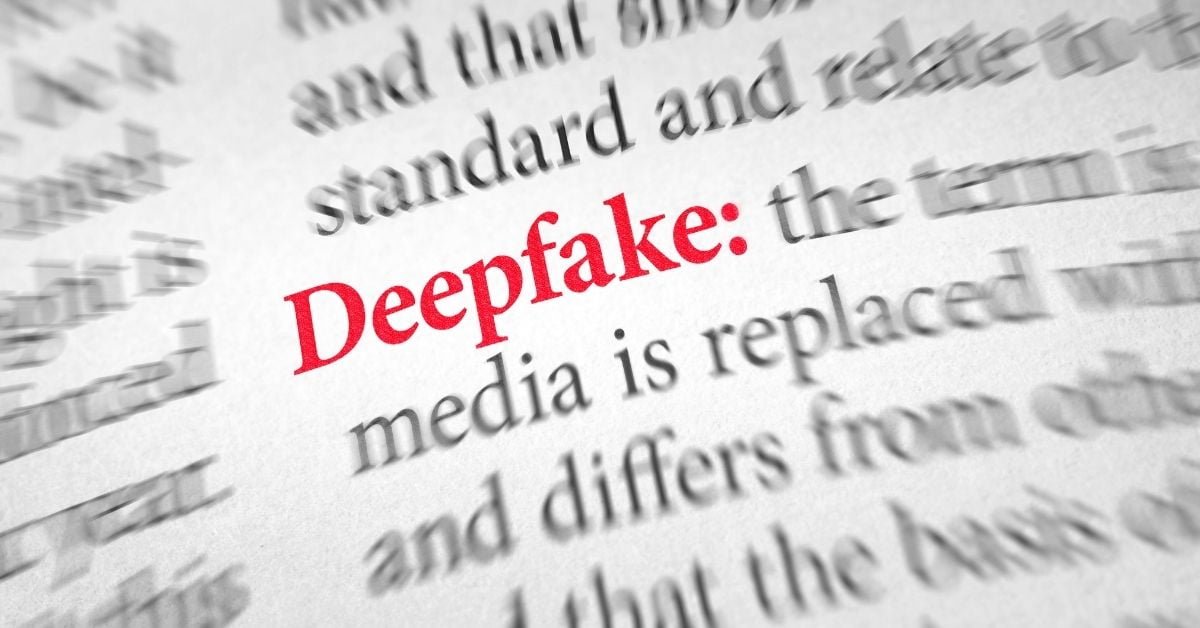Brief Introduction
Deepfakes are a relatively new technological development that allows individuals to create realistic videos or images that can deceive viewers into believing something that isn't true. These media creations are often used for nefarious purposes such as spreading misinformation, defamation, or propaganda. While it may seem like just another aspect of the digital age, their potential impact on society cannot be underestimated. As this technology continues to improve, it raises important questions about the reliability of media, the authenticity of history, and the very nature of truth itself.

In this article, we will explore the phenomenon of deepfakes, how they work, and their potential impact on our lives. We will delve into their implications for journalism, politics, and the criminal justice system. Finally, we will discuss what steps we can take to mitigate the negative effects of deep fakes and preserve the integrity of our memories and shared experiences.
How Deepfakes Are Changing What We Remember: Understanding Synthetic Media
Deepfakes are synthetic media that are created by using algorithms to manipulate audio and video content. The technology is based on artificial intelligence and machine learning, which allows the software to analyze and mimic patterns in human behavior, such as speech or facial expressions. Using these patterns, the software can create a realistic video or audio clip of someone saying or doing something that they never actually did.
They can be created by anyone with access to the internet and the necessary software. All that is required is a few minutes of audio or video footage of the person to be impersonated, along with some training data for the machine learning algorithm. Once the software has been trained, it can generate a video that is virtually indistinguishable from the real thing.
The implications of this technology are profound. Deep fakes have the potential to disrupt every aspect of our lives, from politics and journalism to personal relationships and even criminal justice. They can be used to manipulate public opinion, spread false information, and even frame innocent people for crimes they did not commit.

The Good, the Bad, and the Ugly: The Pros and Cons of Deepfakes
As with any technological innovation, there are both positive and negative aspects to deepfakes. On the one hand, they can be used for harmless fun, such as creating parody videos or memes. They can also be used for educational purposes, such as creating realistic simulations of historical events or scientific experiments.
On the other hand, these can be used for malicious purposes, such as spreading fake news, propaganda, or disinformation. They can also be used to harass or intimidate individuals, especially women and minorities who are already vulnerable to online abuse.
Perhaps the biggest concern with deep fakes is their potential to undermine trust in media and public institutions. If people cannot trust that the information they are seeing or hearing is real, it can have a devastating effect on democracy and society as a whole.
The Implications of Deepfakes for Journalism and Politics
The rise of deepfakes has serious implications for both journalism and politics. In journalism, deepfakes have the potential to undermine the credibility of news organizations and further erode public trust in the media. Journalists must be vigilant in verifying the authenticity of the information they are reporting, and they must educate the public about the dangers.

In politics, deepfakes can be used to manipulate public opinion and influence elections. Political campaigns can use deepfakes to create fake news stories or attack ads that are designed to damage the reputation of opposing candidates or sway the electorate in their favor.
They can also be used to create convincing videos or audio clips of politicians saying or doing something damaging, even if it never actually happened.
The potential damage of deepfakes in politics is significant, especially in countries with unstable political systems or where the media is already under threat. The use of deepfakes in political campaigns can lead to a crisis of confidence in the democratic process and further polarize society.
The Impact of Deepfakes on Criminal Justice
Deepfakes can also have a profound impact on the criminal justice system. In recent years, deepfakes have been used to create fake evidence or alibis that can exonerate guilty individuals or implicate innocent ones.
This technology can also be used to create fake confessions or eyewitness accounts that can be used to convict individuals of crimes they did not commit.
The use of this technology in the criminal justice system presents a serious threat to the rule of law and due process. It also raises important ethical questions about the use of technology in legal proceedings and the reliability of evidence.
Mitigating the Negative Effects of Deepfakes
As deepfake technology continues to evolve and become more accessible, it is important to take steps to mitigate its negative effects. One approach is to invest in the development of better deepfake detection technologies that can identify media and alert users to their presence.
Another approach is to promote media literacy and critical thinking skills among the general public, so that people are better equipped to identify and evaluate the authenticity of the information they encounter online.
Regulation may also be necessary to prevent the malicious use of deepfakes and to protect the privacy and reputation of individuals who are targeted by synthetic media. However, regulation must be balanced against the need to protect freedom of expression and prevent censorship.

Conclusion
Deepfakes are a powerful and potentially dangerous technological development that has the potential to disrupt every aspect of our lives. While there are both positive and negative aspects to deepfakes, it is important to be aware of their potential impact on society and to take steps to mitigate their negative effects.
By investing in better detection technologies, promoting media literacy, and protecting privacy and freedom of expression, we can help preserve the integrity of our memories and shared experiences and protect the democratic values that are the foundation of our society.
Read what experts is saying about Deepfakes.
Frequently Asked Questions
Q: What are deepfakes, and how do they work?
A: Deepfakes are synthetic media created by using algorithms to manipulate audio and video content. The technology is based on artificial intelligence and machine learning, which allows the software to analyze and mimic patterns in human behavior, such as speech or facial expressions.
Q: Are Deepfakes illegal?
A: The use of deepfakes for illegal purposes, such as defamation, harassment, or fraud, is illegal in many jurisdictions. However, the creation of this technology for artistic, educational, or parody purposes is generally protected by free speech laws.
Q: How can I protect myself from deep fakes?
A: There are several steps you can take to protect yourself from deepfakes, including being vigilant about the authenticity of the information you encounter online, investing in anti-virus and anti-malware software, and educating yourself about the risks and potential impacts of it.
Read more informative blogs at ChooseVPN.



